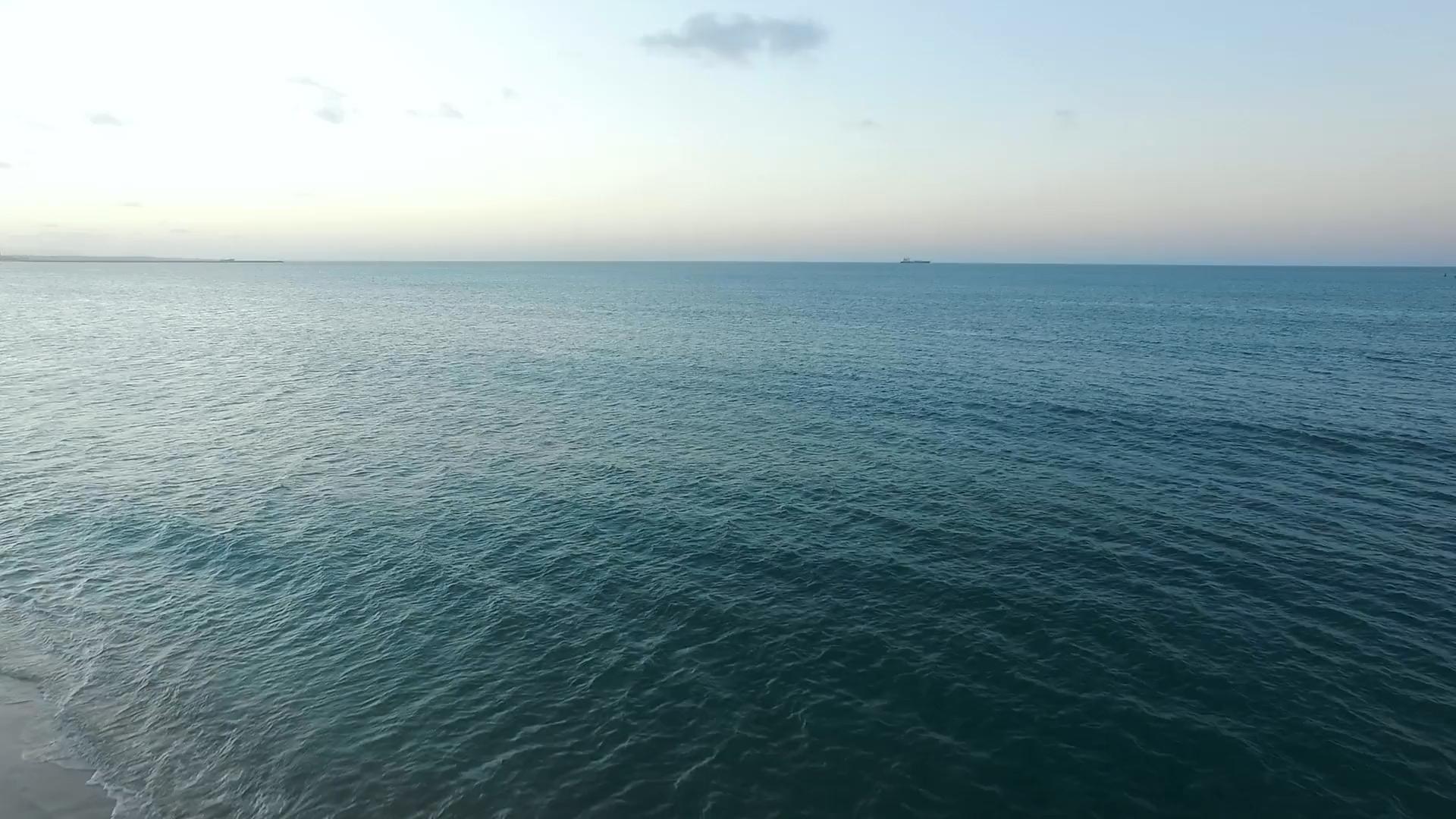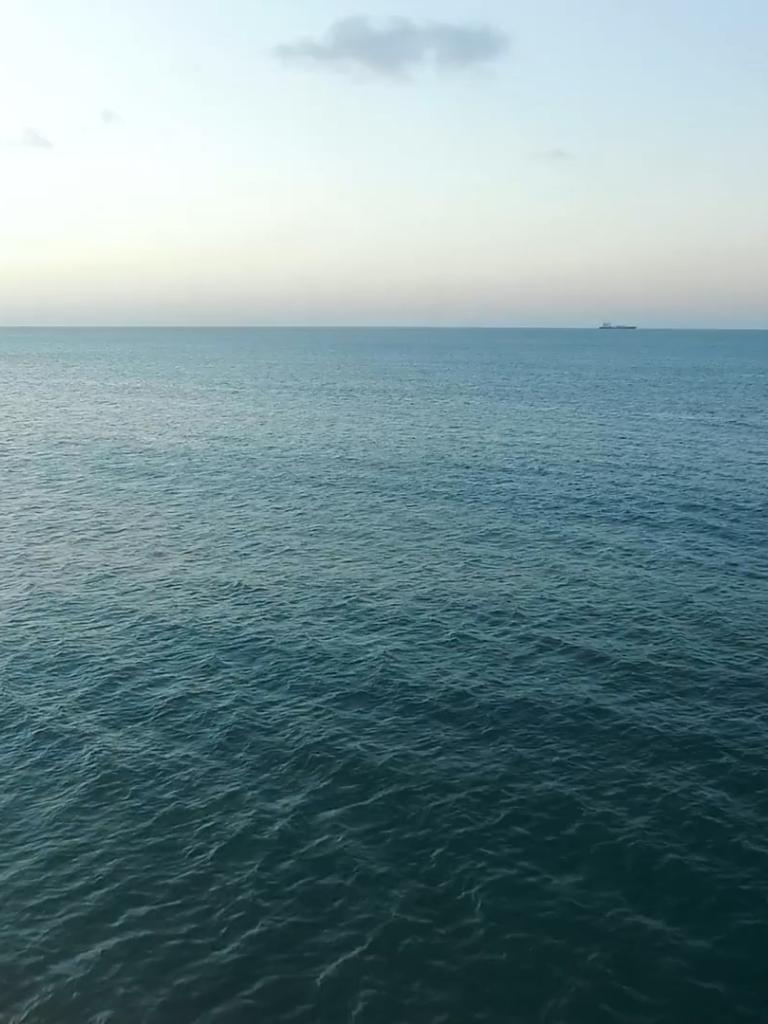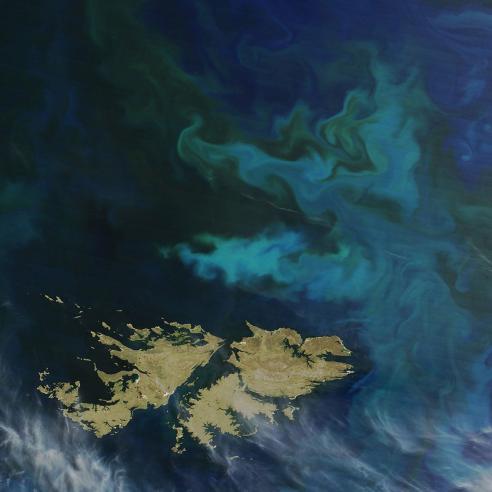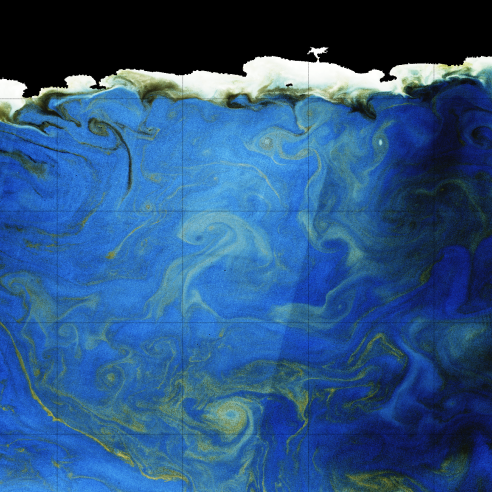EUMETSAT manages the operations of Ocean Colour products derived from the Ocean and Land Colour Imager (OLCI) instrument flown on the Sentinel-3 satellites from the European Commission Copernicus Programme. Ocean Colour System Vicarious Calibration (OC-SVC) with radiometric measurements at sea is required to achieve the quality of the Ocean Colour products defined in the mission requirements. OC-SVC requires a dedicated infrastructure at a favourable location. EUMETSAT has initiated activities on behalf of the EC to investigate the Copernicus OC-SVC infrastructure.
This study is part of a survey to find the best location for potential Copernicus OC-SVC infrastructure in European waters in terms of atmospheric, oceanographic and logistical site characteristics. The study follows Phase-1 and Phase-2 activities of the Copernicus OC-SVC roadmap and precedes the proposed Phase-4 activity. Phase-1 and Phase-2 were respectively the Scientific, Technical and Operational Requirements, and the Preliminary Design, Project Plan and Costing. The proposed Phase-4 is the Technical Definition, Specification, and Detailed Design study.
This study climatologically characterised the El Hierro in the Canaries (Spain) in terms of multiple atmospheric, oceanographic, logistical and other relevant parameters, in order to assess its suitability for the Copernicus OC-SVC infrastructure.
El Hierro location: 27.5876N, 18.1573W
Objectives
The objective of the study was to gather environmental data from available datasets and process them to provide a climatological characterisation of the El Hierro site and its surroundings.
In particular, geographic, atmospheric, oceanographic and anthropic conditions were assessed and analysed with respect to the requirements set in Phase-1, for the selection of an appropriate site to operate the field segment of an OC-SVC infrastructure. The study also included a description of the logistics envisioned to support the development and operations of the future Copernicus OC-SVC infrastructure, in case the site would be selected.
Overview
El Hierro island is the second-smallest and the farthest south and west island of the Canary Archipelago, with a long Marine Reserve and with 60% of its inland territory protected to preserve its natural and cultural diversity as an UNESCO Biosphere Reserve.
Every single requirement established in the Statement of Work (SoW) to determine the feasibility of an OC-CSV site has been successfully satisfied at the El Hierro site, double checking its validity through different databases that are consistent with each other. The El Hierro OC-SVC site enjoys high stability of subtropical atmosphere isolated from local and regional anthropogenic pollution contributions, with high light availability, high persistence of cloud-free conditions, low surface wind, and stable and spatially uniform maritime aerosols through most of the year. Moreover, from the oceanic point of view, the El Hierro OC-SVC site has well-mixed calm, clear, and stable ocean waters with no shear in the first 20m, minimal maritime traffic, and a very safe location close to a marine reserve.
The IEO-AEMET consortium provides a team of technicians and researches highly experienced in operational and scientific aspects of the region's atmosphere and ocean, as well as nearby ports, storage, and maintenance facilities to ensure proper long-term maintenance of heavy oceanographic equipment at the El Hierro OC-SVC site. El Hierro island has a high volume data communication system by optical fibre.
Data sources
| Parameter | Dataset | Temporal extent used in analysis | Website or database used for data access |
|---|---|---|---|
| 1. GEOGRAPHY | |||
| a) Site location shown on nautical charts, showing bathymetry and neighbouring land | El Hierro island and west of the canary archipelago | IEO, digital institutional repository of the Spanish Institute of Oceanography | |
| b) Sea bottom depth and slope at site | El Hierro island and west of the Canary archipelago | 2010-present | IEO |
| c) Cosine of Sun zenith angle at 10am LST | Calculations following equations in Iqbal (1983) | ||
| 2. ATMOSPHERE | |||
| a) Fractional cloud cover | ERA5 | 2000-2020 | ECMWF MARS |
| MM5 | 2015-2020 | IARC archive | |
| b) Wind velocity and direction | Tacorón AEMET Met station | 2010-2020 | AEMET National Climatological Data Base (BNDC) |
| ERA5 | 2000-2020 | ECMWF MARS | |
| MM5 | 2015-2020 | IARC archive | |
| c) Aerosol type and optical thickness | SCO (Cimel) Utilised for comparison of CAMS & MERRA-2 | 2006-2019 | AERONET Aerosol Robotic Network |
| CAMS global reanalysis EAC4 | 2006-2019 | Copernicus Atmosphere Data Store | |
| MERRA-2 | 2006-2019 | NASA EARTHDATA Giovanni website | |
| d) Absorbing gases | |||
| i) atmosphere pressure | El Hierro Airport | 2000-2020 | AEMET National Climatological Data Base (BNDC) |
| ERA5 | 2000-2020 | ECMWF MARS | |
| ii) Total column ozone | Izaña Observatory (Brewer Triad) | 1991-2020 | EUBREWNET website |
| ERA5 | 2000-2020 | Copernicus Climate Data Store | |
| iii) Total precipitable water | Faro de Orchilla GNSS | 2017-2020 | |
| ERA5 | 2000-2020 | ECMWF MARS | |
| iv) NO2 surface concentrations | Izaña Observatory(FTIR) | 2005-2019 | Network for the Detection of Atmospheric Composition Change (NDACC) |
| CAMS EAC4 | 2005-2019 | Copernicus Atmosphere Data Store | |
| OMI Level 3 OMNO2d | 2005-2019 | NASA EARTHDATA Giovanni website | |
| Merged GOME/SCIA/GOME2 | 2005-2017 | Tropospheric Emission Monitoring Internet Service (TEMIS) | |
| 3. OCEAN | |||
| a) Chlorophyll In situ |
Oceanographic cruises (IEO) | 2011-2020 Vulcano/a 2006-2020 Raprocan Twice a year |
Spanish Institute of Oceanography Integrated Ocean Observing System (IEOOS) |
| Climatological | Joint Research Centre (JRC) Environmental Marine Information System (EMIS) | MERIS: 1/5/2002 to 31/12/2020 MODIS AQUA: 1/7/2002 to 31/12/2015 SEAWIFS: 1/9/1997 to 31/12/2004 |
JRC EMIS webpage |
| Reanalysis | CMEMS: Atlantic -Iberian Biscay Irish (IBI)- Ocean Biogeochemistry Reanalysis system | 1993-2019 | Atlantic-Iberian Biscay Irish- Ocean BioGeoChemistry NON ASSIMILATIVE Hindcast |
| Satellite | CMEMS: Merged Sensor product SeaWiFS, MODIS, MERIS, VIIRS-SNPP&JPSS1, OLCI-S3A&S3B | 4/9/1997 to 30/6/2020 | Copernicus Marine Service |
| b) Apparent Optical Properties | CMEMS: North Atlantic Ocean, Ocean Optics products L3 (ESA-CCI) | 4/9/1997 to 30/6/2020 | |
| c) Inherent Optical Properties | |||
| i) Coloured Dissolved Organic Matter (CDOM) absorption at 440nm aCDOM (m-1) Climatological |
JRC EMIS | MERIS: 1/5/2002 to 31/12/2020 MODIS AQUA: 1/7/2002 to 31/12/2015 SEAWIFS: 1/9/1997 to 31/12/2004 |
EMIS - MERIS Monthly climatology absorption coefficient due to chromophoric dissolved organic matter and non-pigmented particles at 443nm (2km) in m^-1 |
| Satellite | CMEMS: Merged Sensor product SeaWiFS, MODIS, MERIS, VIIRS-SNPP&JPSS1, OLCI-S3A&S3B | 4/9/1997 to 30/6/2020 | |
| iii) Particulate backscatter at 443nm bbp (m-1) | CMEMS: Merged Sensor product SeaWiFS, MODIS, MERIS, VIIRS-SNPP&JPSS1, OLCI-S3A&S3B | 1997-2020 | |
| d) Currents In situ |
Spanish Deep Water Buoy Network Tenerife buoy |
1997-2019 | Copernicus Marine Service Puertos del Estado website |
| Climatological | Drifter-Derived Climatology of Global Near-Surface Current | 1979-2020 | NOAA Physical Oceangrpahy Division (POD) Global Drifter Program page |
| Reanalysis | CMEMS: Atlantic -IBI- Ocean Physics Reanalysis system | 1993-2019 | Copernicus Marine Service Atlantic-Iberian Biscay Irish- Ocean Physics Reanalysis |
| e) Waves In situ |
Spanish Deep Water Buoy Network Tenerife buoy | 1997-2019 | Copernicus Marine Service Puertos del Estado website |
| Reanalysis | CMEMS: Atlantic -IBI- Ocean Wave Reanalysis | 1993-2019 | Copernicus Marine Service Atlantic-Iberian Biscay Irish- Ocean Physics Reanalysis |
| f) Sea Surface Temperature In situ i) |
Oceanographic cruises (IEO) | 2012-2020 Vulcano/a -Raprocan Twice a year |
Spanish Institute of Oceanography Integrated Ocean Observing System (IEOOS) |
| In situ ii) | Spanish Deep Water Buoy Network Tenerife buoy |
2001-2019 | Copernicus Marine Service Puertos del Estado website |
| Climatological | NOAA National Center for Environmental Information World Ocean Atlas (WOA) 2018 | 1955-2010 | WOA 2018 - Data Access: Statistical mean of Temperature on 1° grid for all decades |
| Reanalysis | CMEMS: Atlantic -IBI- Ocean Reanalysis system | 1993-2019 | Copernicus Marine Service Atlantic-Iberian Biscay Irish- Ocean Physics Reanalysis |
| Satellite | Global Ocean OSTIA Sea Surface Temperature | 2007-present | Global Ocean OSTIA Sea Surface Temperature and Sea Ice Analysis |
| g) Salinity In situ i) |
Oceanographic cruises (IEO) | 2011-2020 Vulcano/a 2006-2020 Raprocan Twice a year |
Spanish Institute of Oceanography Integrated Ocean Observing System (IEOOS) |
| In situ ii) | Spanish Deep Water Buoy Network Tenerife buoy |
1997-2019 | Copernicus Marine Service Puertos del Estado website |
| Climatological | NOAA WOA 2018 | 1955-2010 | WOA 2018 - Data Access: Statistical mean of Temperature on 1° grid for all decades |
| Reanalysis | CMEMS: Atlantic -IBI- Ocean Reanalysis system | 1993-2019 | Copernicus Marine Service Atlantic-Iberian Biscay Irish- Ocean Physics Reanalysis |
| 4. OTHER | |||
| a) Map of nearby shipping routes | EMODnet | 2019 | EMODnet Human Activities |
| a) Monthly shipping traffic statistics | puertosdetenerife | 2017-2019 | Port authority of Santa Cruz de Tenerife report |
| a) Map of NO2 surface concentration | CAMS EAC4 | 2005-2019 | Copernicus Atmosphere Data Store |
| b) Map of nearby airline routes | International Civil Aviation Organization (ICAO) | 2019 | ICAO history of some of our main achievements in GIS Aviation |
| b) Monthly airline traffic statistics | AENA | 2017-2019 | Aeropuertos Españoles y Navegación Aérea |
| c) Fire occurrences in the surrounding areas (within 50km) | Spanish Ministry of Agriculture, Fisheries and Food | 2006-2015 | Ministerio de Agricultura, Pesca y Alimentación |
The analysis also included additional site-specific data.
Study reports
Climatological and Observational Datasets for the El Hierro Site, Canary Islands, Task 1 Report (Deliverable 3), Spanish Institute of Oceanography/State Meteorological Agency (IEO/AEMET)
Climatological Characterisation of the El Hierro Site, Canary Islands, Task 2 Report (Deliverable 4), IEO/AEMET
Data Communication links with the infrastructure at the El Hierro Site, IEO/AEMET
Site safety at the El Hierro Site, IEO/AEMET
Hurricanes and tropical storms at the El Hierro Site, IEO/AEMET
Supplementary material: storage centre at the El Hierro Site, IEO/AEMET
Presentations
Progress meetings
Final project review
Climatological Characterisation of the El Hierro Site, Oceanographic Characterisation
Climatological Characterisation of the El Hierro Site, Atmospheric Characterisation
Expert review meeting
| Phase | Details |
|---|---|
| Kick-Off | 3/2/2021 |
| Duration | Five months |
| Status | Completed |
| Work Package 1 | Task 1 Report: Climatological and observational datasets |
| Work Package 2 | Task 2 Report: Site Characterisation |
| Phase | Details |
|---|---|
| Kick-Off | 3/2/2021, Online |
| Progress Meeting 1 | 25/3/2021, Online |
| Progress Meeting 2/Final meeting | 11/5/2021, Online |
| Expert review | 24/6/2021, Online |
Conference
Second international Operational Satellite Oceanography (OSO) Symposium, 25-27 May 2021, Virtual Conference. Recent Advances for ROSACE: A European Design for the Copernicus Ocean Colour System Vicarious Calibration Infrastructure






